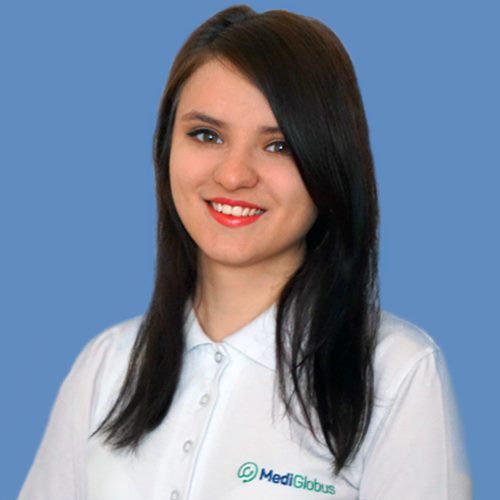Did you know that brain injury is among the top five common causes of death? A car crash or an accident can turn a life around, and an active healthy person becomes a living statue. Fortunately, for these patients, there is hope for recovery. In foreign clinics, patients recover from brain injuries of various degrees of severity. A good rehabilitation program can bring a person back to life even a year after the injury. Learn in our article what methods are used in foreign clinics for successful rehabilitation and how people’s lives improve after undergoing these programs.
CAUSES OF TRAUMATIC BRAIN INJURY
Traumatic brain injury (TBI) is caused by external trauma. Automobile accidents are the most common cause of brain injury. You can also get a brain injury if you are careless at home, after an accident at work, in a fight, due to a fall from a height or as a result of a gunshot wound. Most common patients are male athletes between the ages of 21 and 45.
Brain injury statistics

More than 1.7 million people get a brain injury every year.
According to American statistics, between 50 and 70 per cent of accidents are the result of a car accident.
Men account for 78.8% of all registered TBI cases, while women account for 21.2 per cent.
Patients with head injury are between 21 and 45 years old.
Athletes (boxers, climbers) are more likely to get a brain injury.
The mortality rate from head injuries is 34% of all cases.
Sports and recreational activities account for about 21% of all brain injury cases among American children and adolescents.
WHICH TYPES OF TRAUMATIC BRAIN INJURY ARE THE MOST DANGEROUS?
Open brain injuries are considered more dangerous than closed injuries. An open injury increases the risk of infection and complications during treatment. These injuries are usually severe and cause death in 60% of cases.
Closed brain injuries are more difficult to detect as there are no visible injuries. They can be recognised by symptoms such as blackouts, severe pain and loss of consciousness for more than 1 minute. If these symptoms are present, the person should see a doctor immediately.
THE EFFECTS OF MINOR AND SEVERE TRAUMATIC BRAIN INJURY
The consequences of brain injury vary depending on the degree of damage.
With light damage, the patient has a good prognosis for restoring all functions. However, if the person regularly suffers from mild brain injury, the risk of epilepsy increases. Mild brain damage is called a concussion.
If you start moderate TBI treatment immediately after receiving the accident, the lost functions can be restored within a year. Ignoring the symptoms of brain injury can lead to disability.
The most unpleasant consequences are for severe brain injuries. Survivors lose their ability to work partially or completely. To recover the lost functions, they need long-term rehabilitation using modern technology.
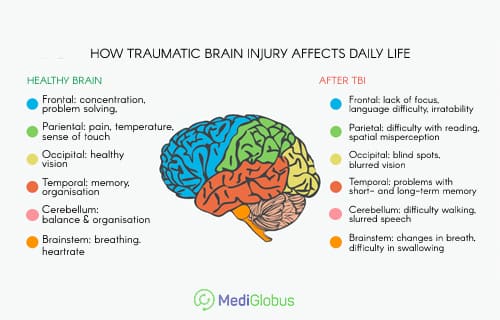
Brain injuries that are left untreated can lead to a stroke or mental disorders.
From a brain injury, a person can lose:
speech;
ability to walk;
memories;
sight/hearing;
ability to memorize new things;
ability to be aware of things;
The trauma also has a bad effect on a person’s psychological state. Effects include loss of confidence, closing away from communication, becoming shy, helpless, depressed or irritable.
WHY GO ABROAD FOR TRAUMATIC BRAIN INJURY TREATMENT?
Every year, over 69 million people suffer from traumatic brain injury worldwide. Without proper treatment, they can gain a disability. One in eight people with this status could work, start a family and travel. They need rehabilitation that would teach them how to live rather than survive.
In developing countries this is not possible – only 3-5% of the budget is allocated for health care. The centres simply cannot buy the necessary equipment to help people.
In developed countries, such equipment as a “Lokomat” device is available in every specialized centre. This helps 85 out of 100 patients to successfully recover and start their life anew.
TBI DIAGNOSTICS ABROAD
When a patient gets into the hospital with a brain injury, first they undergo diagnostics. Doctors check:
the extent of the damage;
presence of a hematoma;
signs of contusion;
signs of haemorrhage;
presence of diffuse damage.
Patients with mild TBI are given a simple head X-ray. CT scans are considered the gold standard for assessing patients with moderate to severe brain injury.
When the patient’s condition stabilizes, doctors perform a neurological examination, which includes an assessment using the Glasgow Coma Scale (GCS). An MRI is prescribed to clarify the prognosis of treatment and rehabilitation after the TBI.
HOW DO YOU TREAT MILD BRAIN INJURIES?
After a light brain injury, no intensive treatment is required. The patient needs peace, physical and mental rest. You can’t get tired and work on the computer. The doctor can prescribe medication that will ease dizziness and nausea. Accurate compliance with doctor’s prescriptions will help reduce the recovery period after an injury.
Recovery prognosis for light brain injuries
Mood swings may be observed in 7-9% of patients at first after trauma. Patients remain able to work after a concussion and may return to normal life. However, they should be cautious – a second trauma may lead to irreversible consequences. If the injury was caused by playing active games or playing extreme sports, it is best to avoid these activities.
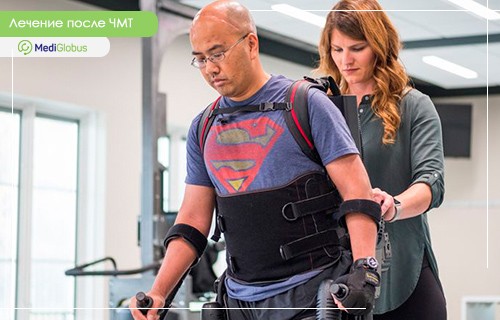
HOW DO YOU TREAT MODERATE BRAIN INJURY?
After entering the emergency department with an average TBI, the patient may need surgery:
to remove the blood clots that put pressure on the brain tissue;
reducing pressure inside the skull by drainage or shunt;
correcting the contusion.
Surgery helps stabilize the patient. The main treatment for TBI is rehabilitation. Rehabilitation for craniocerebral injuries is a set of measures aimed at restoring lost functions. The classical methods of recovery after TBI include:
Physiotherapy | Exercises to increase physical strength, recover flexibility and coordination of movements. |
Labor Therapy | Exercises that teach a person to do everyday things. |
Speech Therapy | Development of ligaments, return of speaking ability or training to use special devices. |
Cognitive therapy | Exercises that train a person’s ability to remember, think, concentrate, plan, make judgments. |
Psychological counselling | Working with the psychologist on the motivation for recovery, a sense of emotional well-being. |
Professional counselling | Teaching person work skills, behaviour at work, taking into account their current state. |
The patient’s loved ones may participate in the rehabilitation process. Their presence will support and inspire the person to work on their condition and improve their psychological state. During this time, loved ones will be able to learn basic rehabilitation techniques to take care of the person who is dear to them outside the clinic.
Prognosis of recovery from moderate brain injuries
In 60% of patients treated, there has been an improvement within six months. They fully recover from the trauma and can return to normal life.
One-quarter of all patients partially recover from the TBI and retain their disability status. They can take care of themselves, but they need help in some household tasks.
A small proportion of patients show little improvement. They retain the status of group 1 disability and require constant care.
WHICH CLINICS SHOULD I GO TO FOR TREATMENT OF MODERATE BRAIN INJURY?
Clinics in Turkey, Switzerland, the Czech Republic and Austria offer good rehabilitation programmes for their patients:
Hospital cereneo (Vitznau);
The cost of TBI rehabilitation in Turkey is the lowest among European clinics. Hospitals of the Czech Republic and Austria offer treatment of brain injuries at moderate prices. TBI treatment in Switzerland will be expensive due to the climate and luxurious hotel conditions. You can find out how much rehabilitation there will be in a particular clinic in your case.
HISTORY OF SUCCESSFUL REHABILITATION OF A PATIENT AFTER A BRAIN INJURY
Michael had a severe TBI after he had a terrible accident on his motorcycle. When he got to the hospital, he needed urgent surgery. During the diagnosis, the doctors found that Michael had diffuse brain trauma.
He spent a few months in a coma. When he woke up, he wasn’t able to move, talk, recognize his family and eat on his own. To improve his physical condition, the doctors created an individual training course for him using ARMEO and NeuroMove technology. But another problem remained – Michael did not remember anything about himself, could not understand where he was and who surrounded him.
A team of therapists and a neuropsychologist started working with Michael. Together, they brought back some of the man’s memories of himself. Gradually, they helped Michael not to forget it when he found himself in a new environment.
After six months of rehabilitation, Michael was discharged from the hospital. He remained disabled, but he learned to perform daily duties. Now he lives with his family and raises his children.
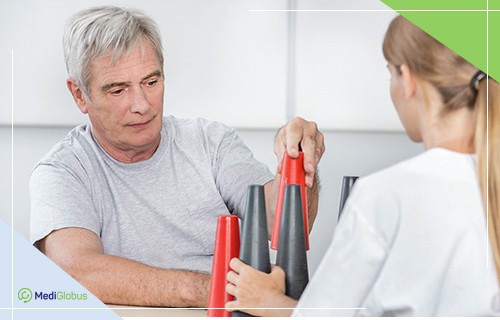
HOW IS TREATMENT AFTER A HEAVY WHIFF?
After severe brain injury, the patient may need surgery to remove a hematoma, contusion, and brain clots. If the skull fractures are open, individual parts of the skull, as well as foreign objects, must be removed. The standards of TBI treatment after severe trauma are particularly strict. Additional application of new rehabilitation technologies is required here, which are only available in a few centres:
Rewalk system | It is an external exoskeleton that helps paralysed patients move around and maintain their balance. It is used as part of a physiotherapy course. |
LOTCA system | Part of an ergotherapy course, where the patient is taught to navigate in an environment. The system helps a person develop fine motor skills, expand the field of perception, train memory and activate thinking. |
Anti Gravity system | Technology teaches walking to patients who are not allowed physical activity. Its peculiarity is that part of the patient’s weight is compensated by air and thus reduces the pressure of body weight on the legs. The device is equipped with video cameras and a person can observe their progress from a side perspective. |
PALPA system | The technology allows giving a prognosis of speech return possibility to the patient after severe brain damage. |
RE-STEP system | A device that helps restore walking skills by simulating different terrain. Some TBI patients demonstrate success after several sessions. |
TheraSuit system | Helps patients after cerebral injuries to tone up idle muscles, improve balance and coordination in space. |
AMADEO Technology | A device that helps restore the sensitivity and motor skills of your hands. The patient learns to grasp movements, learns to hold objects in their hands. |
Prognosis of recovery from severe brain injuries
With severe brain injuries, only 33% of patients recover the ability to walk, talk and work. Every 6th patient remains disabled. Half of the patients require constant support and care from their loved ones after the treatment. About 10% of patients remain in a vegetative state. At the Levinstein Center in Israel, the percentage of successful rehabilitation of patients with TBI is twice as high as the global rate.
CLINICS WHERE PATIENTS ARE REHABILITATED AFTER A SEVERE WHITEWASH
Close relatives of patients with severe brain injury are often confronted with the fact that medical centres refuse to help them. This is particularly true in case if no improvement has been observed for 10-12 months. Rehabilitation centres that take in patients after severe TBI and can improve their condition:
Loewenstein Rehabilitation Centre (Ra’anana)
In this rehabilitation centre, the rehabilitation specialists have achieved encouraging statistics of successful rehabilitation. More than 56% of patients recover some of their lost motor, cognitive and speech functions after severe brain injury.
Rehabilitation Center Reut (Tel Aviv)
The Center has been internationally accredited by JCI. During his visit to the centre, the President of Israel highly appreciated its technological equipment and praised the staff of the clinics for their reverent care of patients.
TREATMENT HISTORY OF A PATIENT AT THE REUT CENTER AFTER A SEVERE TBI
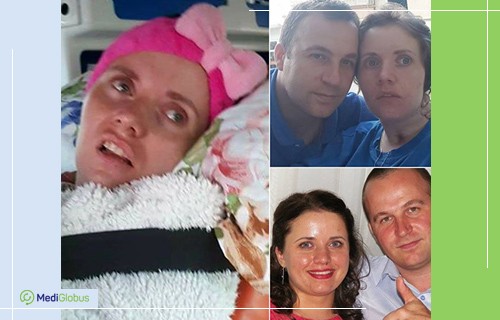
In 2015, a terrible story happened in the Romanian town of Brasov. A young woman, Yulia Ganeya, was hit by a drunk driver when she was on 8th month of pregnancy. Julia suffered a serious head injury and several broken legs. So a 26-year-old girl ended up in a nerve-vegetative coma.
During the year, she was treated in clinics in Bucharest and Bangkok. She had two stem cell transplants to stabilize her condition. In the fall of 2016, her husband brought Julia to the Israeli Reut Center for rehabilitation. It’s the only place they agreed to accept a girl in such a serious condition. For a year the best physiotherapists, rehabilitationists and ergotherapists in the country worked with Julia.
Unfortunately, Julia’s speech or the opportunity to walk has not yet returned. But rehabilitation helped the girl to make small movements with her head and eyes, learn to sit. The family does not lose hope that one day medicine will create a cure that will help Julia. Now all they can do is be there for her and give her love and care.
PAEDIATRIC BRAIN INJURY TREATMENT
23% of newborns are diagnosed with birth trauma. In foreign clinics, it can be diagnosed in advance with ultrasound or chorionic villi sampling at 10-12 weeks of pregnancy. Brain injuries in newborns may lead to some developmental disorders.
The newborn requires surgery immediately to save their life. The intervention includes correction of skull defects, decompression surgery or installation of a stunt. Clinics equipped with neuronavigation systems can trust such a complicated operation. They allow doctors to monitor their actions.
Most often, children receive TBI during games and sports competitions. American hospitals treat 435,000 children annually for emergency care, of whom more than 35,000 are severely injured.
Resume
Traumatic brain injury is a dangerous head injury that can lead to disability and even death. The main symptoms of TBI are nausea, dizziness, loss of consciousness. If they are present, you should seek medical help immediately.
A mild degree of brain injury is called a concussion. Most patients do not need treatment or rehabilitation. The main conditions for their successful recovery are rest and compliance with the doctor’s instructions.
In moderate TBI, closed brain damage is observed. A CT scan is performed to determine the patient’s condition. In this case, the person may need surgery to reduce intracranial pressure or remove a hematoma.
Severe brain injury may be open. Then the patient has part of the skull bone removed.
Rehabilitation is the main opportunity to bring the patient back to life after a brain injury. The main rehabilitation methods are ergotherapy, physiotherapy, speech therapy, restoration of cognitive functions, professional counselling and psychotherapy.
Foreign clinics are actively applying modern technologies to speed up the rehabilitation process. Among these technologies, the most popular ones are Rewalk, LOTCA, Anti Gravity, PALPA.
The prognosis of successful rehabilitation with mild TBI is favourable. All patients successfully recuperate impaired functions. In moderate craniocerebral injuries, full recovery is possible in 60% of patients within a year. In serious TBI, only 30% of patients recover the lost functions.
You can undergo treatment and rehabilitation after craniocerebral injuries at the Turkish Romatem Center, the Czech Motol Clinic, the Austrian Lassnitzhöhe Center and the Swiss cereneo Clinic.
After severe brain injury, when the patient has not had improvement for a long time, you should go to Israel for help. Reut and Loewenstein rehabilitation centres are considered to be among the best in the world.
Foreign clinics carry out rehabilitation after brain injury in children, as well as the surgery of birth TBI.
Sign up for rehabilitation after a brain injury with MediGlobus. Our coordinators will help organize a medical trip for you and your loved ones! Leave an application and we will contact you immediately.




